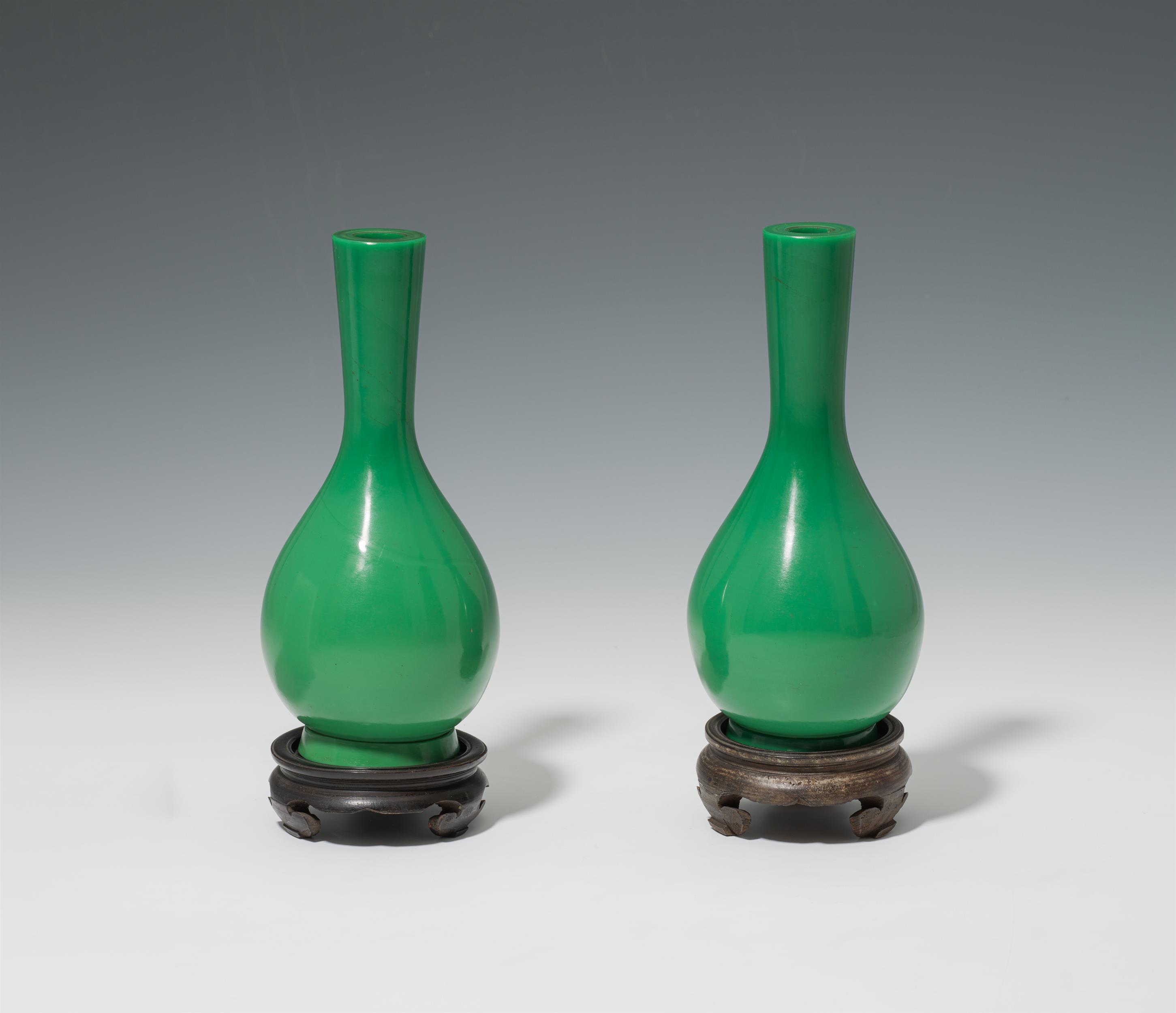2168
Pair of vases
China, Qing-Dynastie (1644-1911), 18th century
A PAIR OF EMERALD GREEN PEKING GLASS BOTTLE VASES, China, Qianlong four-character mark of the period
花瓶
來源:中國,清代(1644-1911)
技法:不透明套綠料玻璃;有「乾隆年製」四字底款(在位年代:1735 - 1796);木製底座為後配,不一致,部分支腳經黏接
尺寸:高21.5(玻璃)
h. 21.5 cm (excl. base)
Estimate: € 10.000 - 20.000
Auction is closed.
The so-called "Peking glass" had its heyday during the reign of Emperor Qianlong in the middle of the 18th century. The way it is made and its texture, especially its many, partly different coloured overhangs, is similar to that of the "cameo glass" known in Europe. For a long time, this type of glass production was only found in the imperial glassworks and was usually used for vases and snuff bottles.
Because of its special appearance, it was used as a substitute for - as in our case - jade, but also for other precious stones, as the glass was easier to work with than the precious stones.
The two vases have been in private ownership in Vienna since the 19th century. They were probably acquired during a trip to China and brought to Austria.
花瓶
來源:中國,清代(1644-1911)
技法:不透明套綠料玻璃;有「乾隆年製」四字底款(在位年代:1735 - 1796);木製底座為後配,不一致,部分支腳經黏接
尺寸:高21.5(玻璃)
所謂「北京琉璃」,在十八世紀中葉的乾隆年間達到鼎盛時期。特別是由於其部分顏色不同的多個覆蓋層,其製造工藝和品質與歐洲著名的「Cameo 玻璃」相似。長期以來,這種琉璃工藝只見於宮廷琉璃廠,多用於花瓶、鼻煙壺等。
由於其特殊的外觀,這用作玉石的替代品(如同此例),但也會用作其他寶石的替代品,因為琉璃比寶石更容易加工。
這兩個花瓶自 19 世紀以來一直在維也納為私人所有。可能是有人在前往中國旅行期間獲得並帶回奧地利。


